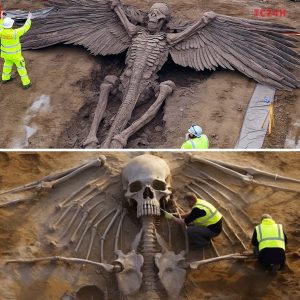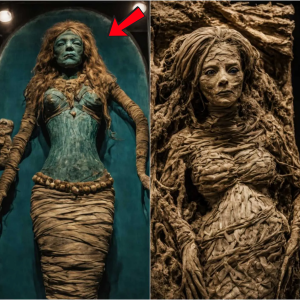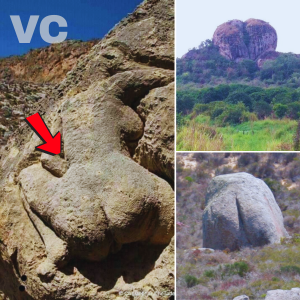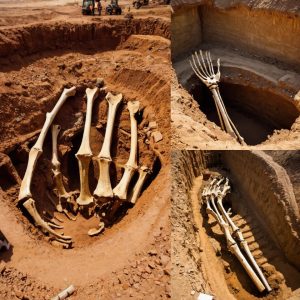When a city thought to be lost to time was suddenly unearthed, it proved that not everything which is gold shines in the light of the Egyptian sun.
Egyptologists led by Dr. Zahi Hawass were in search of the funerary temple of King Tutankhamun, since deified pharaohs and queens would have funerary temples built in their honor so worshippers could leave offerings. Other funerary temples had previously been found at the site. What they found was something almost as impressive as the young king’s tomb. It was a labyrinthine city of mud brick walls that turned out to be the vanished ancient metropolis founded by Tutankhamun’s grandfather, King Amenhotep III. This was the “Lost Golden City”.
“Because the area is one close to some major standing monuments, and since this is desert and relatively flat, the wind builds up surface sand very quickly, and mud brick walls disappear easily,” Egyptologist Betsy Bryan, who was not directly involved in the research, told SYFY WIRE. “Since Malkata palace had been located in the late 19th century, and the temple of Amenhotep son of Hapu was found in the 1930s to the north of the new site, little had been thought to be lacking.”

Ruins of the Golden City of Amenhotep III. Credit: Khaled Desouki/AFP/Getty Images
Hawass and his team started excavating in the area, which extends into the legendary treasure trove of Deir-el-Medina, and is between the Temple of Ramses III in Medinet Habu and the Temple of Amenhotep in Memnon. Because Tutankhamun’s successor Ay had also built a funerary temple there, they believed this could mean the temple of Tutankamun himself was also nearby. What they found exceeded all expectations. The city is impeccably preserved, with walls the did not crumble over the centuries and objects left as if whoever had been using them was about to return.
Hieroglyphics on ceramic wine stoppers told of who founded it The Golden City. It was the heart of administration and industry in the Egyptian empire, and within it once stood the three splendid royal palaces of Amenhotep III. All this was on the other side of an uncommon type of wavy wall was only built towards the end of the Eighteenth dynasty. On the other side, Hawass’ team found everything from workshops (bricks with the seal of Amenhotep III were still there), food containers, industrial tools, jewelry, casting molds for magical amulets and inscriptions that whisper from the distant past. There was even a fish covered in gold (below).
“There is now real indication that Amenhotep III’s city was the true precursor to Amarna and was similar in size and layout,” Bryan said. “The amount of palace-made high quality storage vessels left in place at the time of abandonment is striking. It certainly suggests that these were left behind at the time that Akhenaten departed for Amarna in his 5th year, and it indicates that everyone just picked up and left at that time, at least from this industrial environment.”

A gilded fish being carried out of the ruins of the Golden City. Credit: Khaled Desouki/AFP/Getty Images
Some unusual burials also surfaced. Two cows were strangely positioned and buried in separate chambers, and a person whose identity remains unknown had also been buried in their own chamber with arms laid out at their sides and rope around their feet. The significance of these burials remains undetermined for now. However, what is better known is the glory of the king who ran the city.
Amenhotep III brought peace and prosperity to Egypt. He only ever fought one war, and though he was already married to Queen Tiy, multiple marriages were not taboo. The pharaoh would go on to marry multiple royal women from foreign countries to strengthen alliances. He also built extensively throughout Egypt and Nubia. Most of his building efforts were concentrated in Thebes and Memphis, including the Colossi of Memnon, his own funerary temple, and his palace complex. Egypt was obviously not at a loss for gold then. Horses, copper and lapis lazuli from Asia were bought with Egyptian gold.
“Amenhotep III was the greatest and most prolific builder Egypt had ever seen at the time,” Bryan said. “Rameses II emulated him and took over many of his monuments, making it appear that he was actaully the greatest builder, but it’s not likely to be true. His legacy was of the king who was the most powerful, richest and capable of his Near Eastern peers. Egyptologists rather uniformly consider the art produced for his reign to be the finest ever made in Egypt.”
Pharaohs and queens always had an influence on religion in Ancient Egypt. Not only were they worshipped as gods and goddesses themselves after death, but they had favorite deities in life. The pharaoh’s favored goddess was the lion-headed war goddess Sekhmet. Rituals dedicated to Sekhmet included the pouring of beer, dyed red, poured over the ground to feed her insatiable thirst for blood. There were yearly festivals dedicated to Sekhmet during which revelers hoping to have a vision of the goddess would drink beyond intoxication while lotus-shaped metal trinkets holding some sort of hallucinogen (possibly opium) were dangled over their heads.

Unearthed in the Golden city were some unusual burials, like this one. Credit: Khaled Desouki/AFP/Getty Images
Amenhotep III was also dedicated to the Sun gods Aten and Ra, giving them as much significane as the rest of Egypt’s temple gods and naming his city what translated to “Ascension of Aten”. Whether this influenced his son to go to extremes with the worship of Aten later remains unclear. Amenhotep IV, who changed his name to Akhenaten or “Beneficial to Aten” because he went monotheistic and only worshipped Aten and tried to abolish the Egyptian pantheon…that didn’t go too well.
The controversial shift in religion may be the reason that Akhenaten decided to abandon the Golden City when he ascended the throne build his palace elsewhere. After his death, Tutankhamun restored the pantheon and breathed life back into the city. Bryan believes Akhentaen’s heresy tarnished the reputation of his illustrious father.

Jewelry and other artifacts from the Golden City. Credit: Khaled Desouki/AFP/Getty Images
“What Amenhotep III did was to focus the attention away from Amun-Re of Karnak, enabling the worship of Re-Horakhty and then Aten to develop easily,” she said. “Had Akhenaten not become the heretic ruler that he did, Amenhotep III would certainly have been remembered far more for his own feats.”
More about these mysteries could be revealed as secrets of the Golden City continue to emerge. While it may no longer be the bustling epicenter of an empire, resplendent with the luxuries of its day, the sun will never really set on the people who gave it light.





